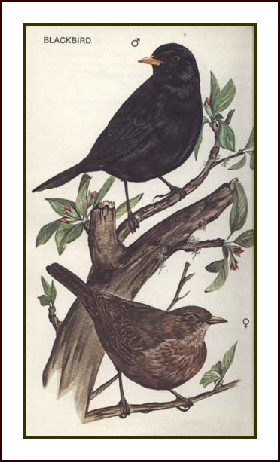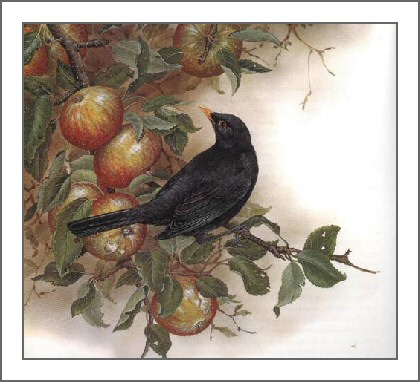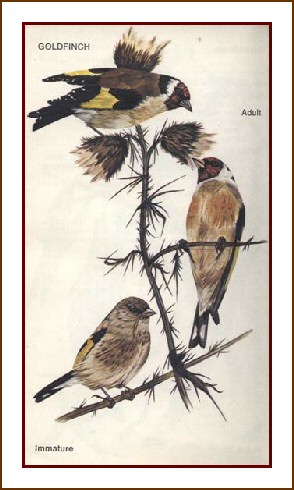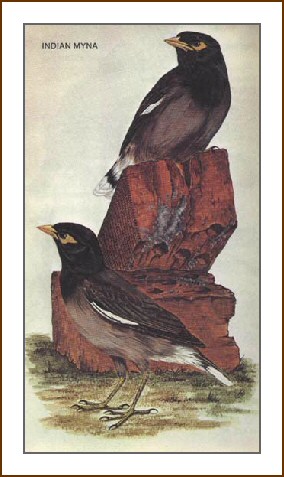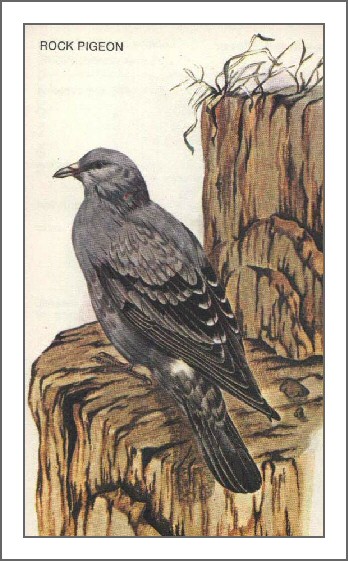

/p>
|
|
|
||||
|---|---|---|---|---|---|
|
|
WAXEYE |
||||
|
|
|
||||
|
|
WAXEYE/Tauhou Zosterops lateralis FAMILY: Zosteropidae Native, self introduced from Australia in the mid-1800s. Partially protected. This little insect eater, with it's white eye ring, is most obvious in Winter when it moves in flocks through gardens and parks throughout NZ. They feed on insects, nectar, berries and fruit. Breeding occurs from August to February with more than one clutch per season. The nest is a flimsy structure of fine grasses and fibres attached like a hammock with spiders' web to twigs or leaves in outermost foliage. The eggs, 3-4 are clear pale blue, and can often be seen through the walls of the nest.
FANTAIL / Piwakawaka
FANTAIL/Piwakawaka Rhipidura fuliginosa FAMILY: Muscicapidae A native of NZ the Fantail is also found in Australia and the Pacific with 3 closely related sub-species in NZ. Fully protected.There are 2 colour phases, black and pied, the black phase being rare in the North Island. Found throughout NZ they are common in any habitat with trees and shrubs. They are often seen in small flocks or family groups feeding on insects, especially by 'hawking' (catching the insects in flight). Breeding is from August to January and more than one brood is raised. The nest is a small firm cup of fibres, moss, bark and hair, coated with spiders web, with a neat fine fibre lining, 1.5 -3mts from the ground and usually on a slender branch or horizontal fork, sometimes above water. They often have loose material hanging from the bottom forming a 'beard'. The eggs, 3-4, are white with grey and brown spots, more dense at the larger end.
WELCOME SWALLOW
WELCOME SWALLOW Hirundo tahitica FAMILY: Hirundinidae Also in the SW Pacific and Australia, the Swallow was a rare straggler to NZ prior to the 1950's, and has rapidly spread. It is fully protected. The strong forked tail and swift erratic flight make it easily identifiable. Found throughout both islands in open country close to water. Swallows gather in flocks during the Autumn and Winter and can often be seen perching on wires and bare branches. Feeding occurs on the wing, catching small flying insects, often above open water. Nesting is from September to February, and more than one brood is raised in the same nest. This is composed of mud pellets reinforced with grass, and is a shallow cup lined with feathers, mainly under bridges and old farm buildings. The eggs, 3-5, are white, freckled with chestnut spots.
YELLOW HAMMER & CIRL BUNTING
YELLOWHAMMER Emberiza citrinella FAMILY: Emberizidae Introduced from Europe in the 1860s. Not protected. Yellow hammers are found throughout NZ, mainly in open country to alpine tussock. They feed on seeds and insects and form large flocks in Winter and Spring. Breeding is from October to January and the nest is generally close to the ground in scrub, hedges, fern, gorse etc. It is made of grasses lined with finer grass and hair, and the eggs, 3-5, pink to purplish white, are erratically patterned with finely pencilled dark lines, which gave the bird the old fashioned name of 'scribbling lark'.
CIRL BUNTING Emberiza cirlius FAMILY: Emberizidae Introduced from Europe in the 1870s, the Cirl Bunting is not protected. Similar to the Yellowhammer, the male has a prominent black throat and eye strip. The female does not have the chestnut rump associated with both species. They are found mainly on the East coast of the South Island and rare in the North Island. Habitat and breeding is similar to the Yellowhammer, but the eggs have less prominent markings.
BLACKBIRD |
||||
|
|
|
||||
|
|
BLACKBIRD Turdis merula FAMILY: Muscicapidae Introduced from Europe from 1860s, the Blackbird is not protected. The immature bird and the female are dark brown above with lightly spotted chin and breast, more speckled in the immature bird. They are very common throughout NZ in all habitats except alpine. They feed mainly on the ground on worms and often on fruit. Nesting is from July to January and more than one clutch is produced. The nest is often conspicuous on trees, shrubs, hedges and buildings. Big and often untidy it is made from grasses, roots and fibres, bound with mud, and the deep cup is lined with grass and rootlets. The eggs, 2-4, are dull turquoise, thickly freckled with red-brown. Blackbirds sing often and their alarm call is a persistent "tchink tchink".
GOLDFINCH GOLDFINCH Carduelis carduelis FAMILY: Fringillidae Introduced from Europe 1860s the Goldfinch is not protected. Found throughout NZ they are common in settled areas and especially abundant in fruit growing areas. They often flock together, and their lovely red, gold and black colours gave the flock the lable of 'A Charm of Goldfinches'. They feed mainly on seed heads, especially thistle and dandelion, grasses, insects and their larvae. Breeding is from September to December and there is usually 2 broods. The nest is neat, round and made from grass roots, cobwebs and hair, lined with thistledown, wool or feathers. The nest is 1.5 - 2.5mts from the ground in trees and shrubs, often in outside branches. The eggs, 4-6, are bluish white with reddish blotches and spots at the larger end.
MYNA
INDIAN MYNA Acridotheres tristis FAMILY: Sturnidae Introduced, initially from Australia 1870s. Not protected. Similar size to Blackbird. Plentiful in the North Island northwards from Wanganui and Southern Hawke's Bay, occasionally south of this line. Found in built-up areas and form communal night roosts outside the breeding season. They feed mainly on insects, some fruit and seeds. Breeding is November to February with usually two broods. The nest is an untidy assortment of grasses, plastics, celulose and green leaves, in holes in buildings, trees and banks. The eggs, 3-5, are pale blue. These birds are great mimickers and in captivity can be taught to speak.
ROCK PIGEON Rock Pigeon Columba livia FAMILY: Columbidae Introduced as domesticated races, now wild. Not protected. The plumage of wild birds is widely variable from white to black, due to the number of original breeds. In wild flocks, many birds are reverting to the original plumage shown in the plate. Found throughout NZ especially along the east coast and in major towns and cities. They can also be found near cliffs, clay banks, riverbeds and the seashore. They feed mainly on seeds. Breeding is throughout the year. The nest is a flimsy structure of light sticks, on buildings and ledges and in cliff crannies. The eggs, usually 2, are white.
|
||||

Copyright(c) 2006 Janet Marshall. All rights reserved.
myid@myhost.com
nbsp;




















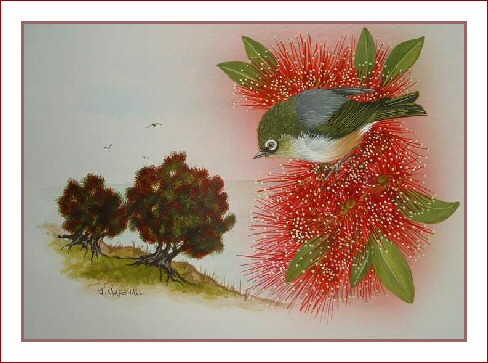
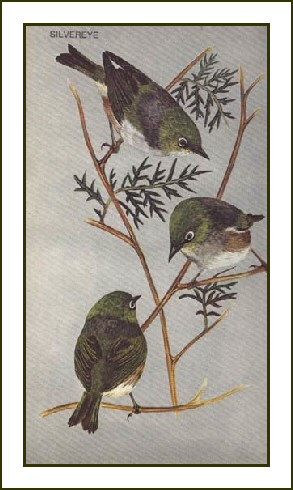
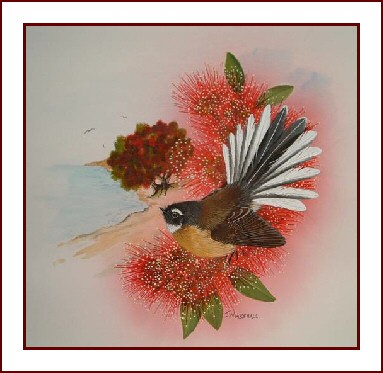
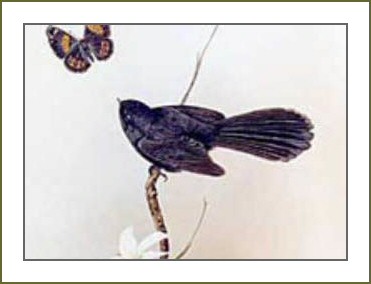
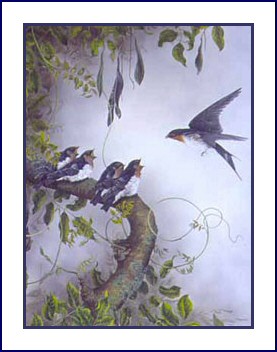
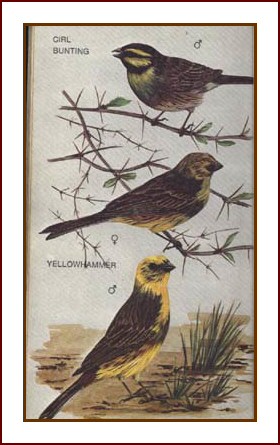
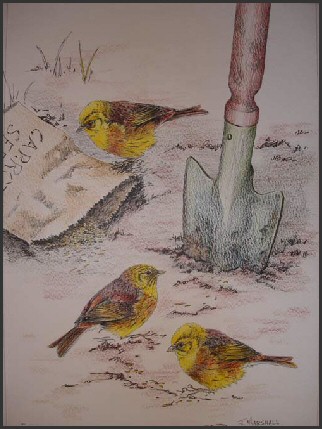 yellowhammer
yellowhammer